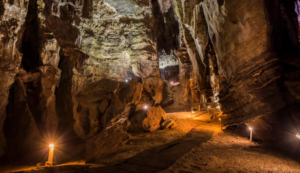In 1936, archeologists began unearthing a trove of early human fossils in a South African cave. Now, researchers say most of those ancient bones date back 3.7 million years, which makes them more than 1 million years older than previously thought.
In a study published Monday in the Proceedings of the National Academy of Sciences, an international team of researchers turned to an innovative dating technique. They used space particles to analyze bones in the Sterkfontein Caves, part of a a major fossil site in northern South Africa known as the “Cradle of Humankind.”
Greece to appeal the use of the term “Turkaegean” by Turkey within the EU
The Sterkfontein Caves contain more remains from Australopithecus — a family of early hominins that eventually gave rise to Homo sapiens — than anywhere else on Earth, according to Darryl Granger, a geology professor at Purdue University and lead researcher of the study. “There are hundreds of them,” he told Insider.
But it’s hard to accurately date the Australopithecus remains, in part because the cave has multiple layers, as well as animal fossils on the same site, which might be from different eras than the fossils next to them.
Read more: yahoo
Ask me anything
Explore related questions





